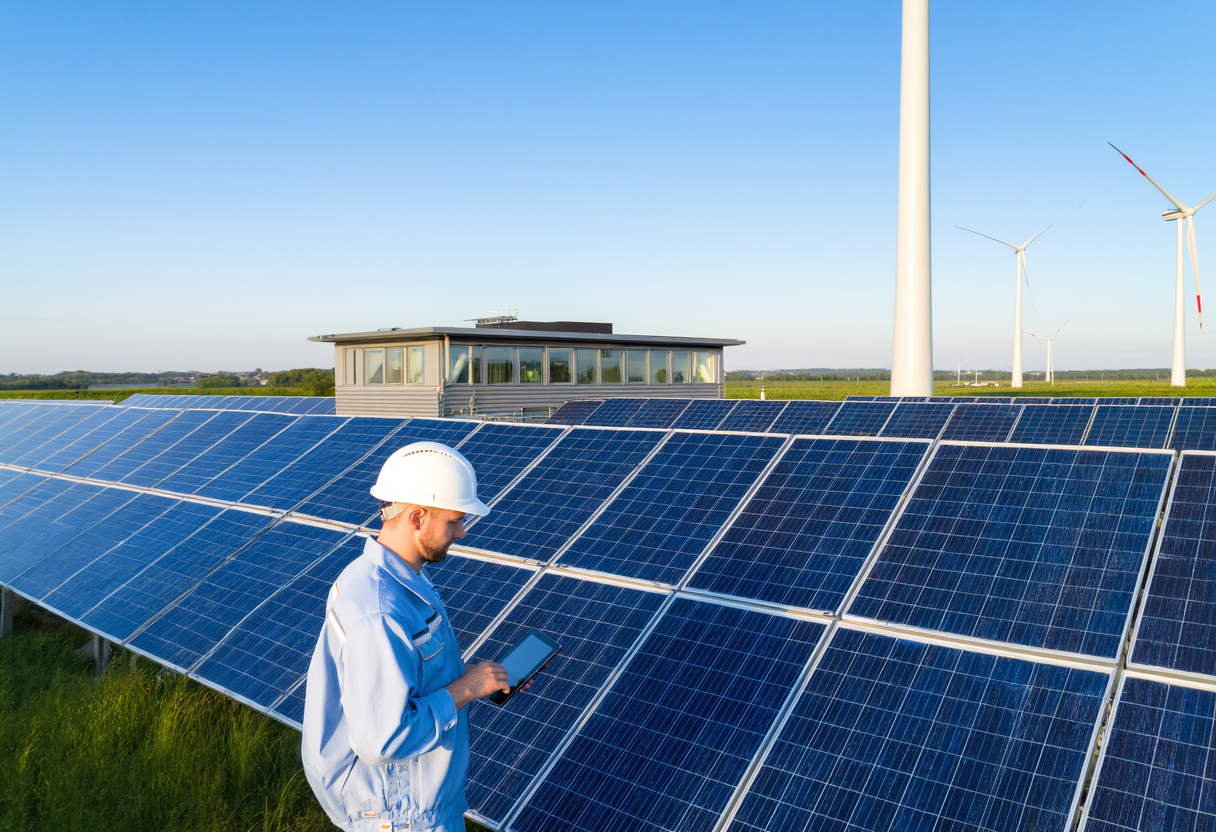The Future of Solar Leasing: Trends and Innovations to Watch
As solar energy continues to gain traction, solar leasing stands at the forefront of innovation in renewable energy. This article explores emerging trends and technologies within solar leasing, highlighting the trajectory it is likely to take in the coming years. From evolving financing models to new technological advancements, discover how solar leasing adapts to meet changing consumer needs.
Emerging Trends in Solar Leasing
Solar leasing has seen a remarkable evolution driven by a combination of technological advancements and shifting consumer preferences. Recently, there has been a surge in interest towards flexible leasing options that allow for customizable agreements tailored to the homeowner's needs. This shift reflects a demand for personalization in renewable energy solutions. Additionally, the growth of community solar projects showcases how solar leasing can evolve to accommodate collective participation in solar energy generation. Homeowners are expressing interest in arrangements that enable shared benefits, thus expanding solar access to wider populations. Innovations like virtual power plants also hint at a future where solar leasing integrates seamlessly with grid infrastructure, lowering costs while maximizing energy delivery efficiency. These trends suggest that solar leasing is rapidly progressing to meet and exceed user expectations.
Innovations in Technology Supporting Solar Leasing
Below the surface, technology is playing a critical role in shaping the future of solar leasing. Advancements in solar panel efficiency and battery storage capabilities are transforming the economics of solar energy. Smart home technologies are increasingly complementing solar installations, allowing homeowners to monitor energy usage and optimize consumption patterns in real-time. Moreover, the introduction of mobile applications for managing solar leasing contracts enhances user engagement and satisfaction. These innovations not only simplify installation and maintenance but also empower users to take control of their energy production and consumption spaces. As the technology landscape continues to advance, solar leasing will undoubtedly leverage these capabilities to offer increasingly robust solutions tailored to diverse consumer needs.
Financial Innovations in Solar Financing
Innovations in financial structures are reshaping solar leasing opportunities, pushing the boundaries of traditional financing models. Innovative financing options, such as Power Purchase Agreements (PPAs) and subscription models, are gaining popularity. These models cater to a broader audience by providing alternative pathways to solar energy adoption beyond conventional leasing. Moreover, companies are beginning to integrate energy storage solutions within leasing agreements, enhancing both efficiency and savings for the homeowner. Such innovative financial structures not only lessen the upfront costs but can also lead to higher returns over time. Couples who choose solar leasing must remain vigilant and informed about the evolving financial landscape to ensure they select the option best aligned with their goals.
Environmental Sustainability and Community Engagement
As solar leasing continues to expand, its role in promoting environmental sustainability and community engagement is becoming increasingly apparent. Community solar programs allow multiple households to benefit from a shared solar system, driving collective renewable energy initiatives. This model offers homeowners access to solar energy without the constraints of purchasing or leasing directly on their property. Solar leasing can catalyze community participation in going green, linking neighbors and fostering collaboration on sustainable practices. Additionally, environmental education initiatives spearheaded by solar companies are enhancing consumer knowledge about the renewables sector. This growing awareness fuels continued investment in solar leasing while promoting broader environmental goals, positioning solar leasing as a vital solution in the fight against climate change.
The Impact of Government Policies on Solar Leasing
Government policies play a significant role in shaping the landscape of solar leasing, driving both challenges and opportunities. Increased subsidies and favorable regulations provide a conducive environment for leasing companies and consumers alike. Recent legislation promoting renewable energy initiatives underpin many solar leasing arrangements, offering both financial incentives and heightened reliability. However, regulatory hurdles can also emerge, necessitating adjustments from leasing companies. Understanding the impact of government policies is vital for homeowners considering solar leasing, as it can influence potential savings and benefits significantly. It's crucial to remain informed about local and state incentives and regulatory changes to optimize the advantages of solar leasing.
Conclusion: Charting the Future of Solar Leasing
As we look ahead, solar leasing is poised to remain a critical component in the renewable energy sector. Emerging trends and innovations suggest that solar leasing will continue to adapt to consumer demands and technological advancements. Homeowners looking to explore solar energy solutions will find in leasing an option that aligns with both their financial and environmental goals. Understanding the evolving landscape of solar leasing can help them maximize benefits while supporting the global transition towards cleaner energy. Continued commitment to solar leasing signifies not just adaptability but a shared vision for a sustainable future.
